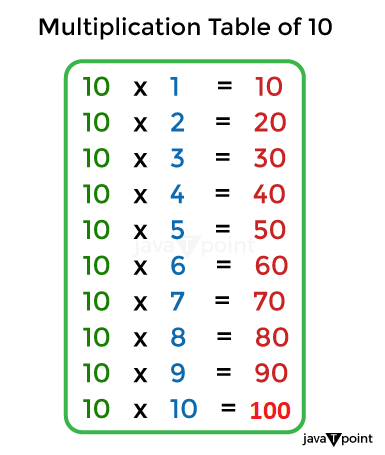10 Times TableMathematics is an interesting subject that consists of patterns and structures that exist in our world, and multiplication is one of the basic concepts of Mathematics. Multiplication, i.e., one of the fundamental operations in mathematics, offers fantastic patterns and relationships. Among all the number multiplication tables, the 10 times table stands out from other numbers due to its properties and practical applications. This article will teach you about the 10 times table, its patterns, tricks, and real-life applications. Basic of 10 Times TableWhether you're a student, teacher, or simply curious about the beauty of numbers, the 10 times table will surely affect your mathematical imagination and attract your attention. The 10 times table is a sequence of numbers obtained by multiplying the digits from 1 to 10 by the number 10. This table forms an important foundation for understanding more complex mathematics concepts. Let's take a look at the first few terms of the 10 times table: 
We can observe how each product ends in a zero. This pattern arises because multiplying any number by 10 shifts the digits from one place to the left, eventually adding a zero at the end of the number. This property is very helpful when we perform mental calculations or deal with larger numbers. Properties and PatternsThe 10 times table shows several interesting patterns and properties, which are discussed below:
Real-life ApplicationsThe 10 times table finds practical applications in various real-world scenarios, which are discussed below:
ConclusionThe 10 times table is a mathematical construct important in theoretical and practical applications. Its patterns and properties make it valuable for mental calculations, understanding decimals, and exploring various real-world applications. Whether it's converting units, calculating percentages, or visualizing proportions, the 10 times table is a basic pillar of mathematical understanding; by exploring the concept of this table, we gain knowledge of the underlying patterns and structures that make mathematics such a fascinating subject. So, let us appreciate the beauty of the 10 times table and its various role in our daily lives.
Next TopicHow to Express 10 to the Power of 2
|
 For Videos Join Our Youtube Channel: Join Now
For Videos Join Our Youtube Channel: Join Now
Feedback
- Send your Feedback to [email protected]
Help Others, Please Share










